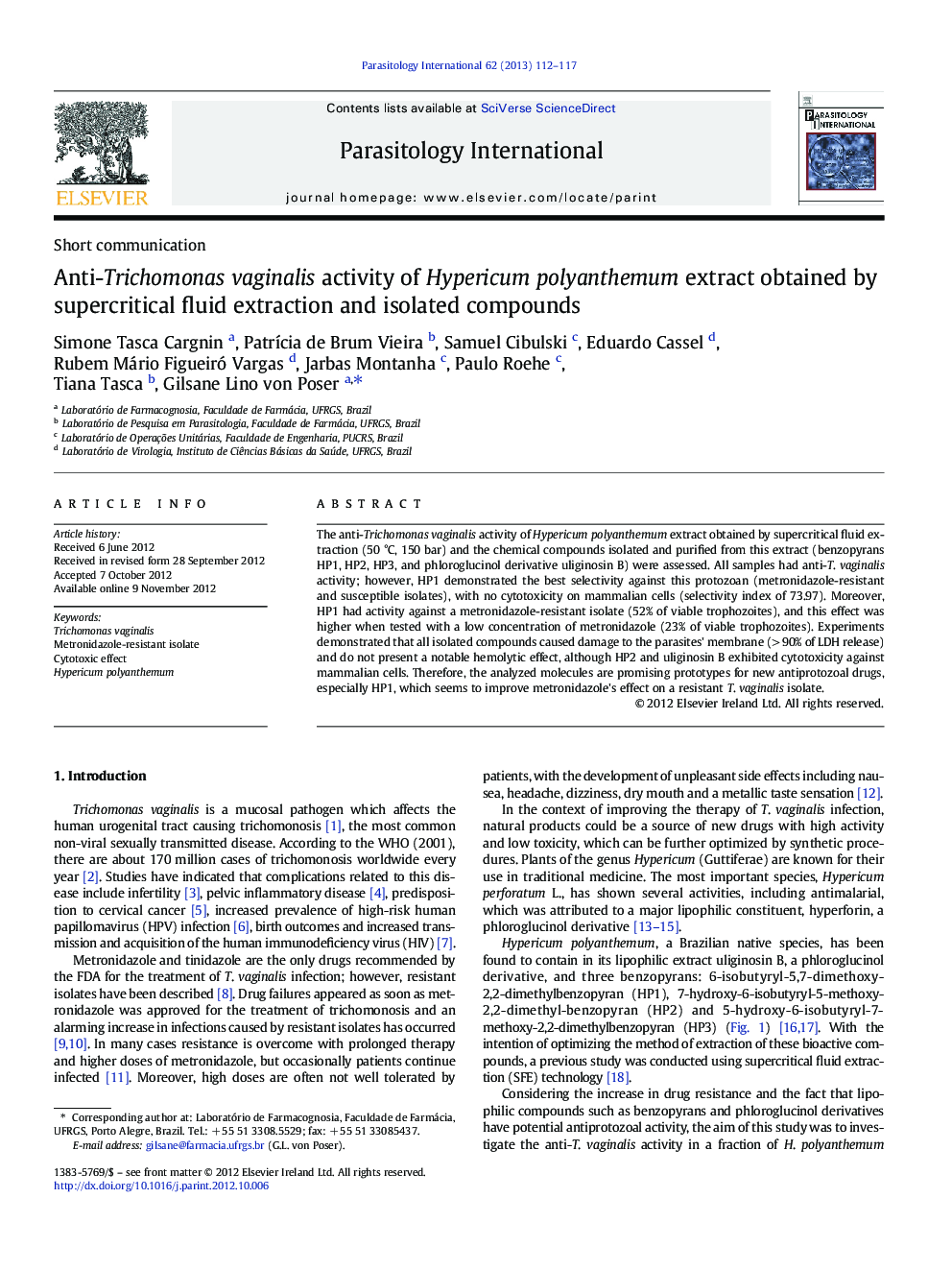| Article ID | Journal | Published Year | Pages | File Type |
|---|---|---|---|---|
| 3417834 | Parasitology International | 2013 | 6 Pages |
The anti-Trichomonas vaginalis activity of Hypericum polyanthemum extract obtained by supercritical fluid extraction (50 °C, 150 bar) and the chemical compounds isolated and purified from this extract (benzopyrans HP1, HP2, HP3, and phloroglucinol derivative uliginosin B) were assessed. All samples had anti-T. vaginalis activity; however, HP1 demonstrated the best selectivity against this protozoan (metronidazole-resistant and susceptible isolates), with no cytotoxicity on mammalian cells (selectivity index of 73.97). Moreover, HP1 had activity against a metronidazole-resistant isolate (52% of viable trophozoites), and this effect was higher when tested with a low concentration of metronidazole (23% of viable trophozoites). Experiments demonstrated that all isolated compounds caused damage to the parasites' membrane (> 90% of LDH release) and do not present a notable hemolytic effect, although HP2 and uliginosin B exhibited cytotoxicity against mammalian cells. Therefore, the analyzed molecules are promising prototypes for new antiprotozoal drugs, especially HP1, which seems to improve metronidazole's effect on a resistant T. vaginalis isolate.
Graphical abstractFigure optionsDownload full-size imageDownload as PowerPoint slideHighlights► Hypericum polyanthemum extract was obtained by supercritical fluid extraction. ► Three benzopyrans, HP1, HP2 and HP3 were isolated. ► HP1, HP2 and HP3 showed anti-Trichomonas vaginalis activity. ► HP1 demonstrated the best selectivity against metronidazole-resistant and susceptible isolates. ► HP1 demonstrated no cytotoxicity against mammalian cells.
